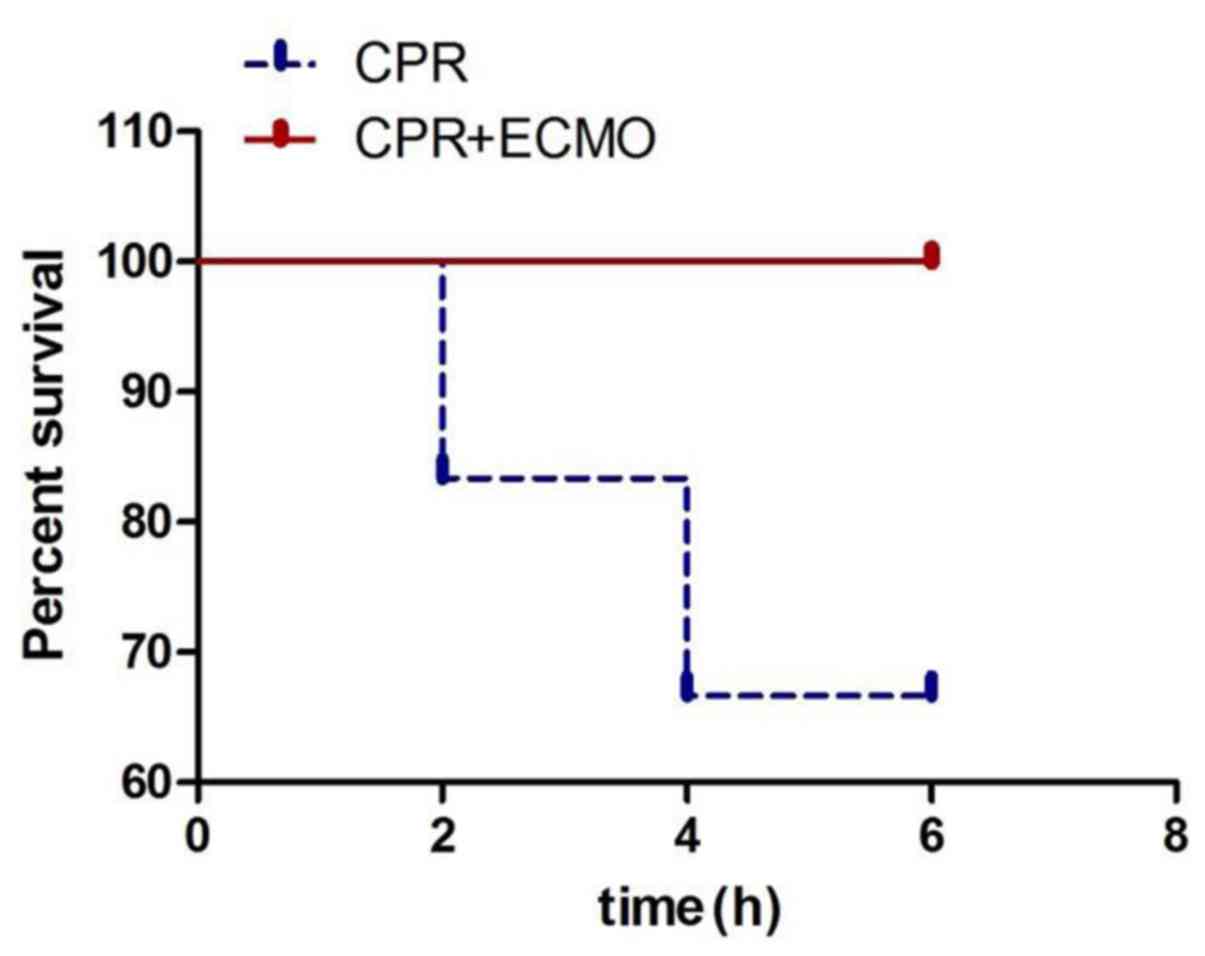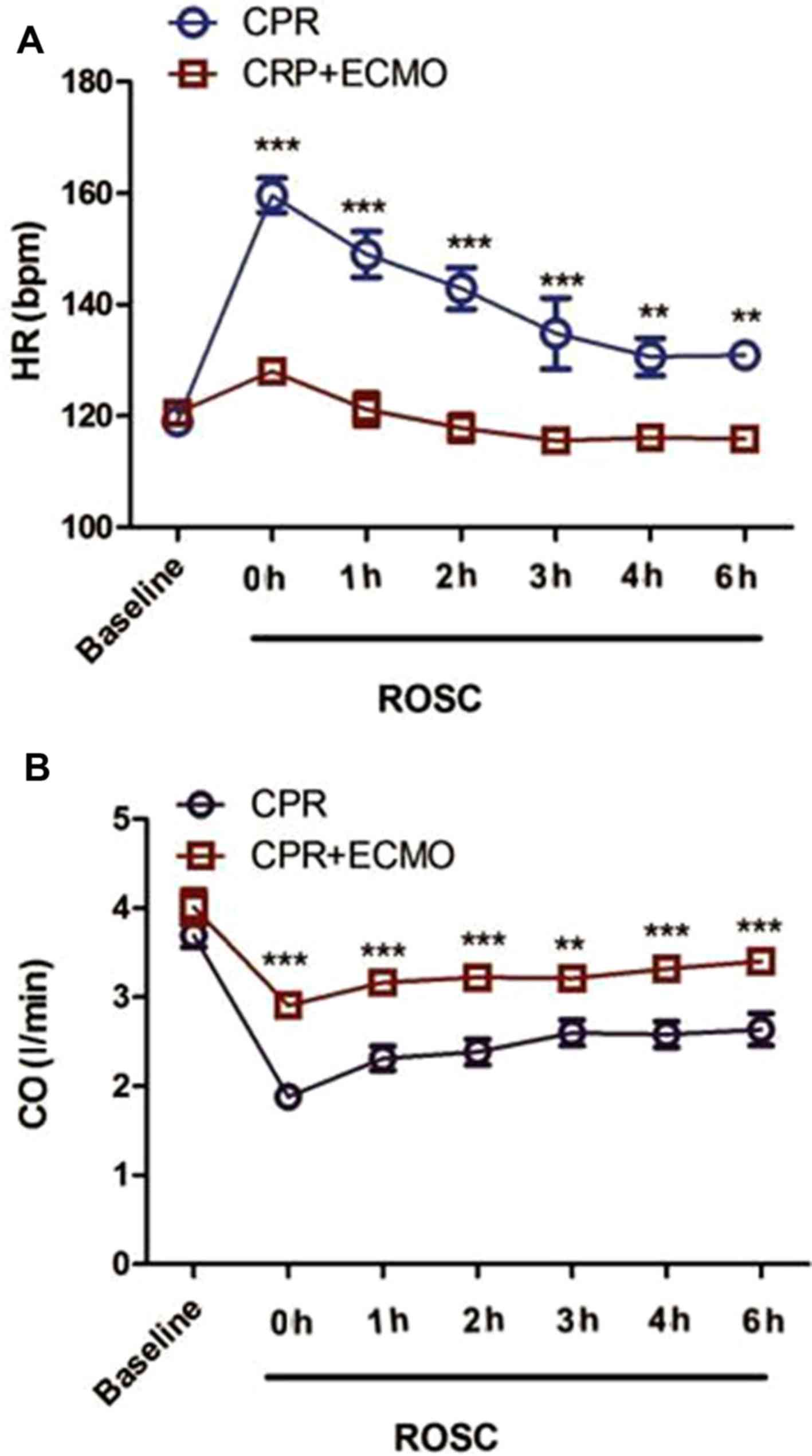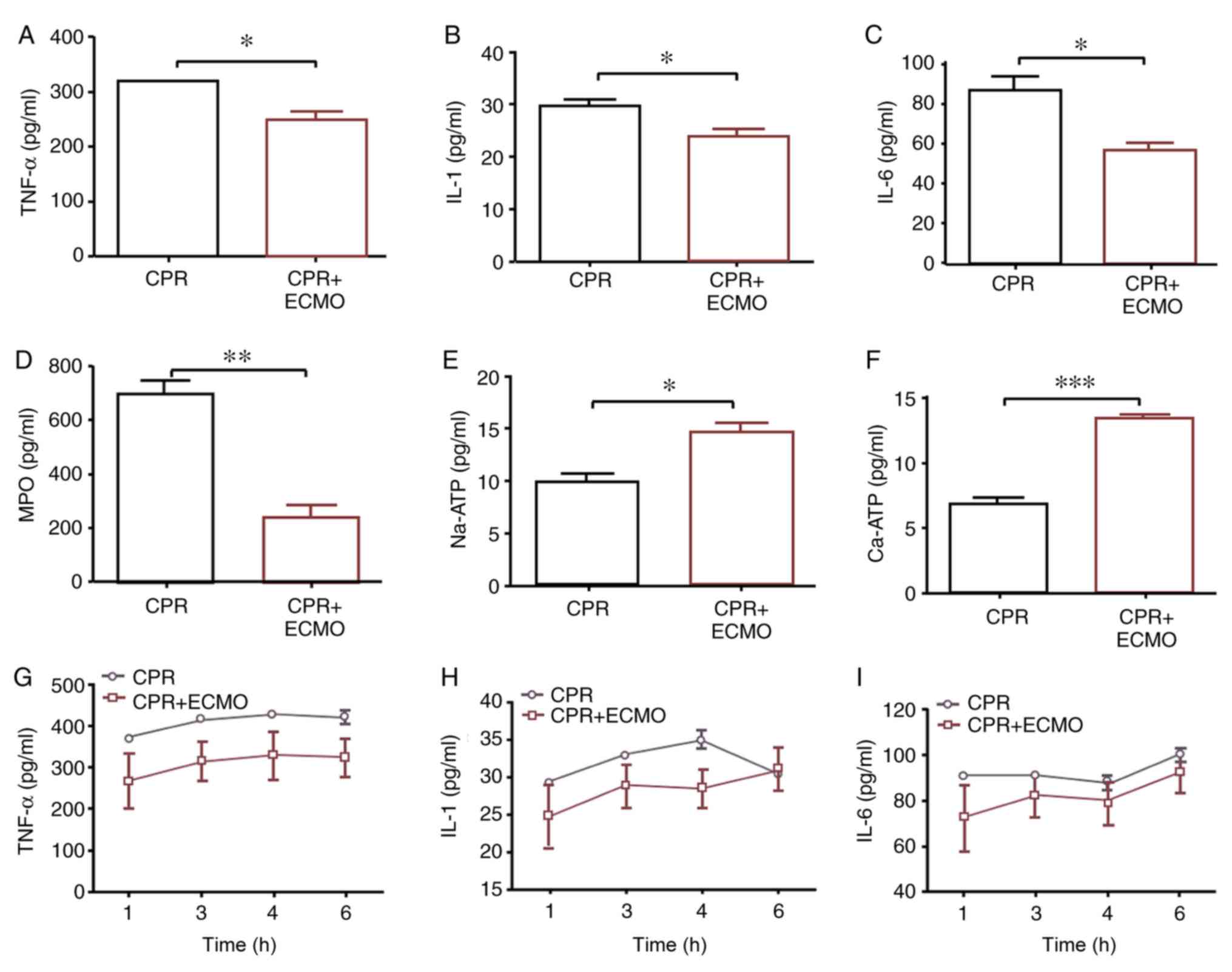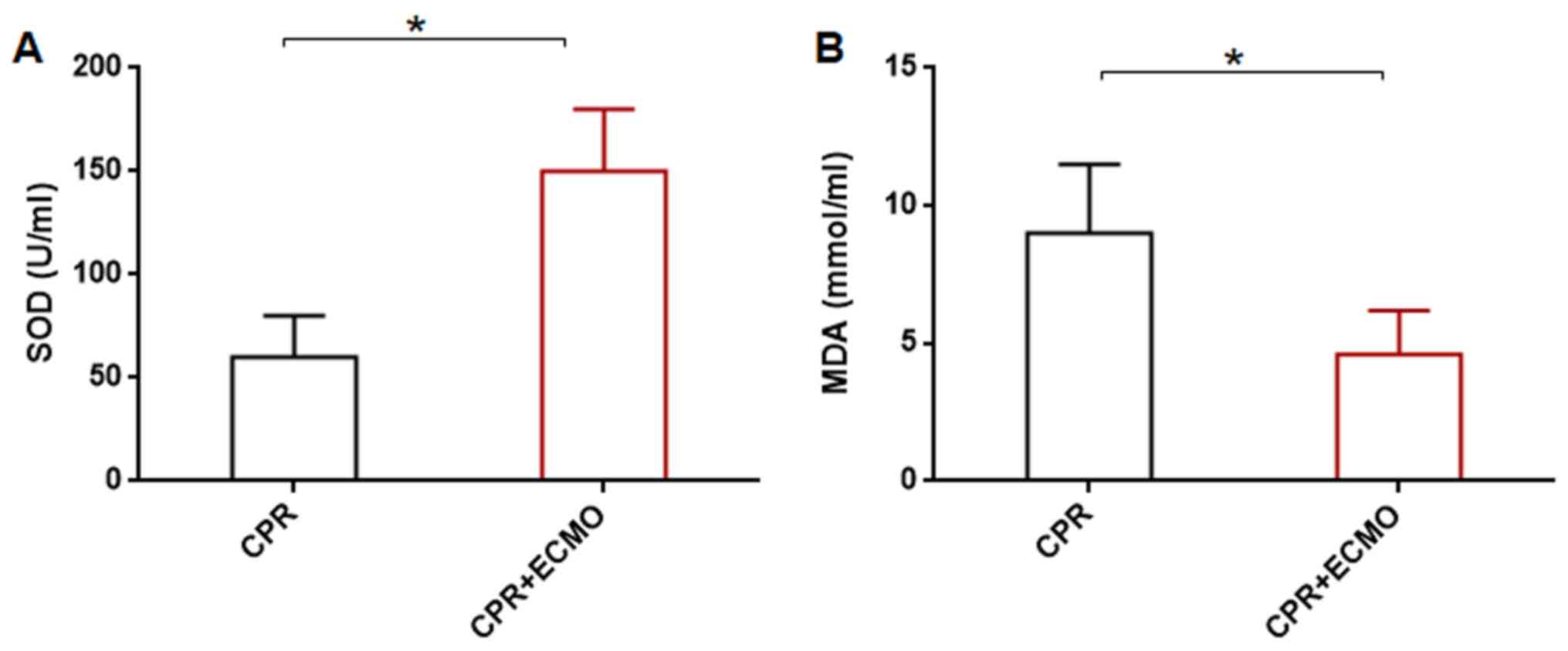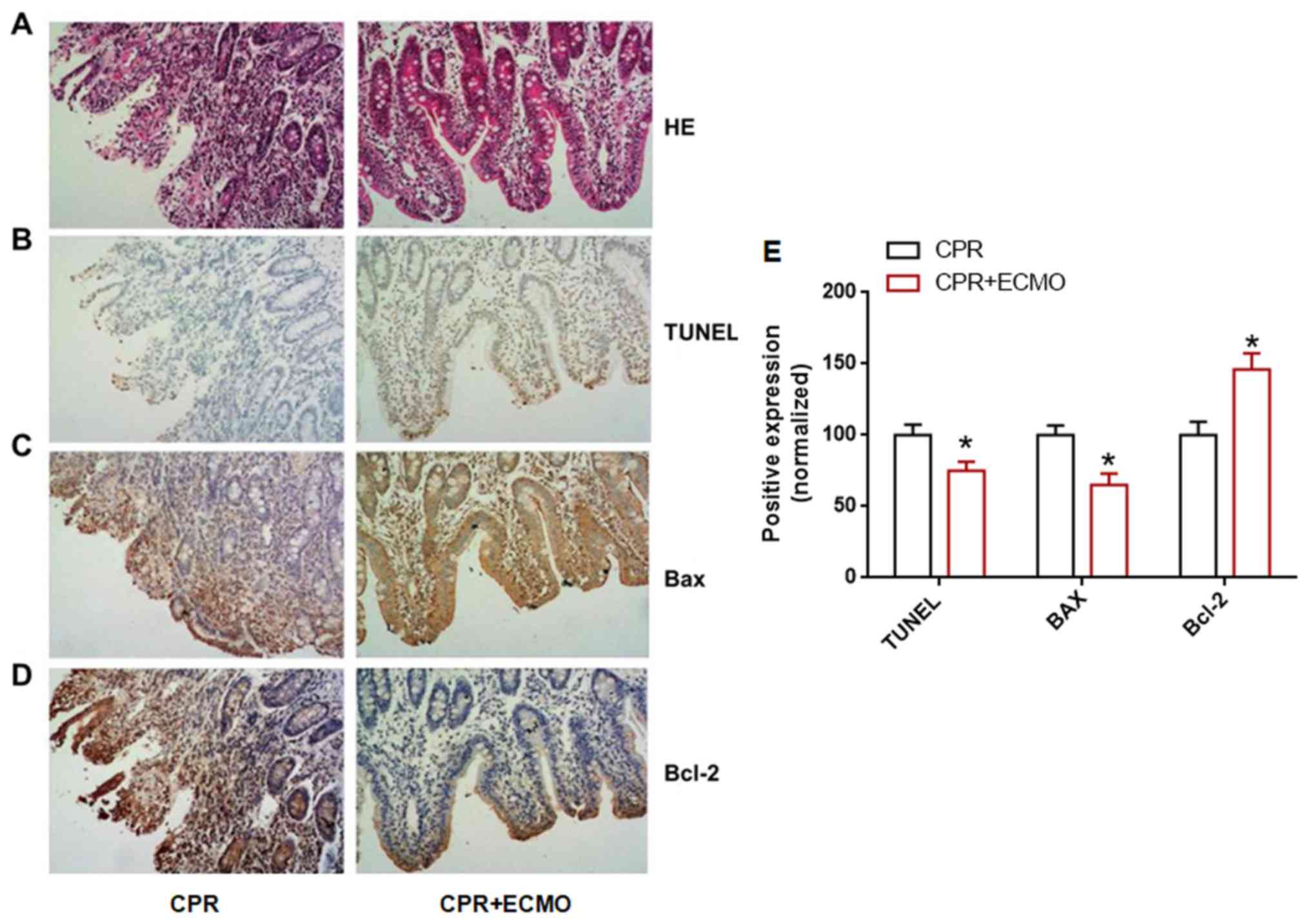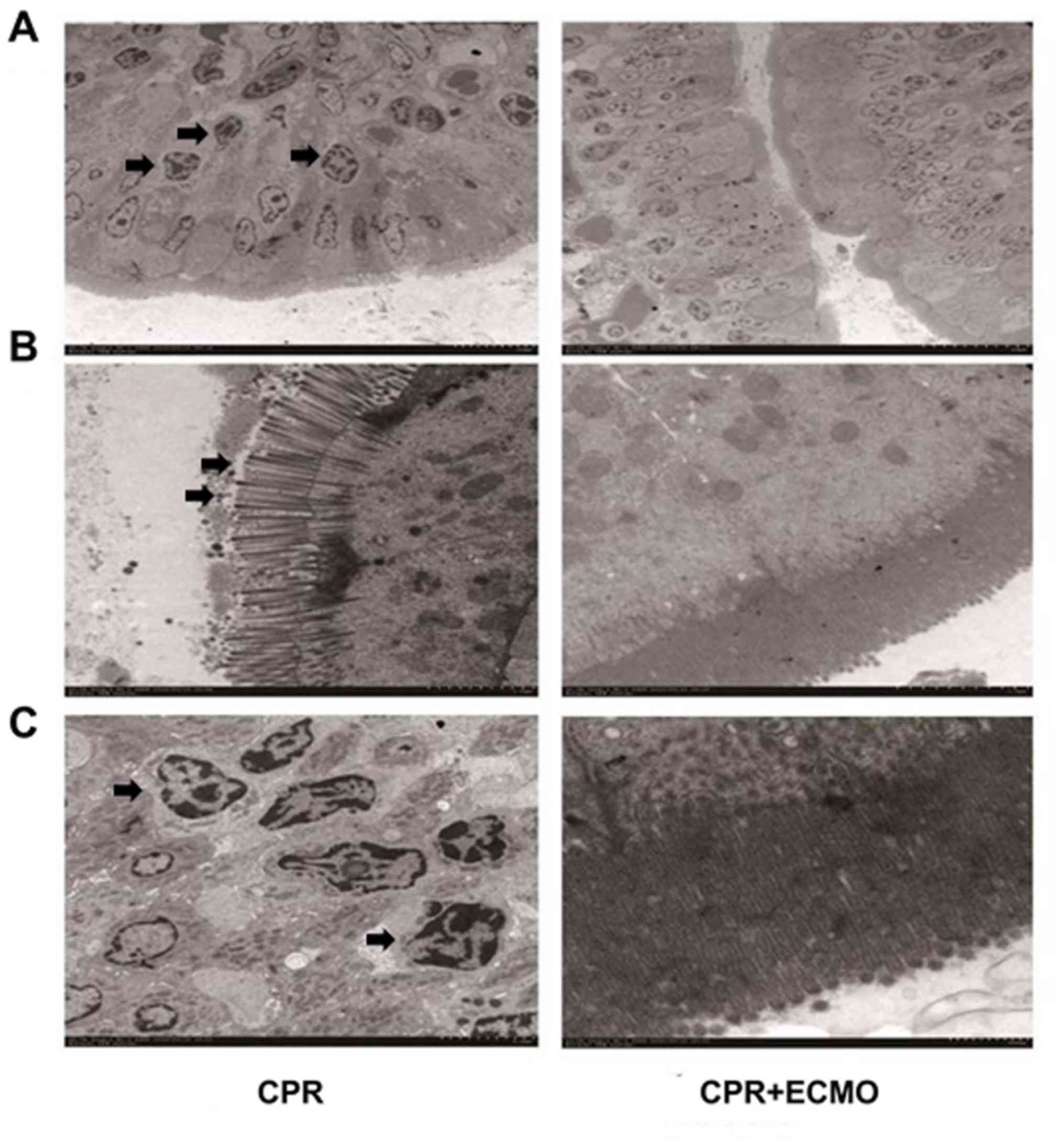|
1
|
Mentzelopoulos SD and Zakynthinos SG:
Post-cardiac arrest syndrome: Pathological processes, biomarkers
and vasopressor support, and potential therapeutic targets.
Resuscitation. 121:A12–A14. 2017. View Article : Google Scholar : PubMed/NCBI
|
|
2
|
Callaway CW, Donnino MW, Fink EL, Geocadin
RG, Golan E, Kern KB, Leary M, Meurer WJ, Peberdy MA, Thompson TM
and Zimmerman JL: Part 8: Post-cardiac arrest care: 2015 American
heart association guidelines update for cardiopulmonary
resuscitation and emergency cardiovascular care. Circulation 132
(18 Suppl 2). S465–S482. 2015.
|
|
3
|
Perman SM, Grossestreuer AV, Wiebe DJ,
Carr BG, Abella BS and Gaieski DF: The utility of therapeutic
hypothermia for post-cardiac arrest syndrome patients with an
initial nonshockable rhythm. Circulation. 132:2146–2151. 2015.
View Article : Google Scholar : PubMed/NCBI
|
|
4
|
Jahandiez V, Cour M, Bochaton T, Abrial M,
Loufouat J, Gharib A, Varennes A, Ovize M and Argaud L: Fast
therapeutic hypothermia prevents post-cardiac arrest syndrome
through cyclophilin D-mediated mitochondrial permeability
transition inhibition. Basic Res Cardiol. 112:352017. View Article : Google Scholar : PubMed/NCBI
|
|
5
|
Bacon MK, Gray SB, Schwartz SM and Cooper
DS: Extracorporeal membrane oxygenation (ECMO) support in special
patient populations-the bidirectional glenn and fontan
circulations. Front Pediatr. 6:2992018. View Article : Google Scholar : PubMed/NCBI
|
|
6
|
Wu XY, Zhuang ZQ, Zheng RQ and Liu SQ:
Extracorporeal membrane oxygenation as salvage therapy for acute
massive pulmonary embolism after surgery for tibiofibular
fractures. Chin Med J (Engl). 131:2611–2613. 2018. View Article : Google Scholar : PubMed/NCBI
|
|
7
|
Hernandez Conte AT, Ng D, Ramzy D,
Dilibero D, LaBounty TM, Gaultier C and Behringer EC:
Extracorporeal membrane oxygenation in a 29-year-old man with
Pneumocystis jirovecii respiratory failure and AIDS. Tex
Heart Inst J. 45:254–259. 2018. View Article : Google Scholar : PubMed/NCBI
|
|
8
|
Kim H, Paek JH, Song JH, Lee H, Jhee JH,
Park S, Yun HR, Kee YK, Han SH, Yoo TH, et al: Permissive fluid
volume in adult patients undergoing extracorporeal membrane
oxygenation treatment. Crit Care. 22:2702018. View Article : Google Scholar : PubMed/NCBI
|
|
9
|
Panda BR, Prabhu A, Provenzano S and Karl
T: Use of extracorporeal life support for emergency coronary artery
bypass grafting. Interact Cardiovasc Thorac Surg. 16:897–899. 2013.
View Article : Google Scholar : PubMed/NCBI
|
|
10
|
Tan BK: Extracorporeal membrane
oxygenation in cardiac arrest. Singapore Med J. 58:446–448. 2017.
View Article : Google Scholar : PubMed/NCBI
|
|
11
|
Conrad SA and Rycus PT: Extracorporeal
membrane oxygenation for refractory cardiac arrest. Ann Card
Anaesth. 20 (Suppl 1):S4–S10. 2017. View Article : Google Scholar : PubMed/NCBI
|
|
12
|
Pan H, Chen D, Liu B, Xie X, Zhang J and
Yang G: Effects of sodium hydrosulfide on intestinal mucosal injury
in a rat model of cardiac arrest and cardiopulmonary resuscitation.
Life Sci. 93:24–29. 2013. View Article : Google Scholar : PubMed/NCBI
|
|
13
|
Meek S and Morris F: ABC of clinical
electrocardiography. Introduction. I-Leads, rate, rhythm, and
cardiac axis. BMJ. 324:415–418. 2002. View Article : Google Scholar : PubMed/NCBI
|
|
14
|
Maudet L, Carron PN and Trueb L:
Cardiopulmonary resuscitation: The essential of 2015 guidelines.
Rev Med Suisse. 12:313–317. 2016.(In French). PubMed/NCBI
|
|
15
|
Hang CC, Li CS, Wu CJ and Yang J: Acute
kidney injury after cardiac arrest of ventricular fibrillation and
asphyxiation swine model. Am J Emerg Med. 32:208–215. 2014.
View Article : Google Scholar : PubMed/NCBI
|
|
16
|
Wu CJ, Li CS, Zhang Y and Yang J:
Application of positron emission tomography in the detection of
myocardial metabolism in pig ventricular fibrillation and
asphyxiation cardiac arrest models after resuscitation. Biomed
Environ Sci. 27:531–536. 2014.PubMed/NCBI
|
|
17
|
Gawlinski A: Measuring cardiac output:
Intermittent bolus thermodilution method. Crit Care Nurse.
20:118–120, 122–114. 2000.PubMed/NCBI
|
|
18
|
Chen Y, Huang Y, Lu X, Wang G and Chi P:
Antitumor effects of the silencing of programmed cell death ligand
1 in colorectal cancer via immunoregulation. Oncol Rep.
40:3370–3380. 2018.PubMed/NCBI
|
|
19
|
MacFie J: Enteral versus parenteral
nutrition: The significance of bacterial translocation and
gut-barrier function. Nutrition. 16:606–611. 2000. View Article : Google Scholar : PubMed/NCBI
|
|
20
|
Schroeder DC, Maul AC, Mahabir E, Koxholt
I, Yan X, Padosch SA, Herff H, Bultmann-Mellin I, Sterner-Kock A,
Annecke T, et al: Evaluation of small intestinal damage in a rat
model of 6 Minutes cardiac arrest. BMC Anesthesiol. 18:612018.
View Article : Google Scholar : PubMed/NCBI
|
|
21
|
Wurm R, Cho A, Arfsten H, van Tulder R,
Wallmüller C, Steininger P, Sterz F, Tendl K, Balassy C,
Distelmaier K, et al: Non-occlusive mesenteric ischaemia in out of
hospital cardiac arrest survivors. Eur Heart J Acute Cardiovasc
Care. 7:450–458. 2018. View Article : Google Scholar : PubMed/NCBI
|
|
22
|
Korth U, Krieter H, Denz C, Janke C,
Ellinger K, Bertsch T, Henn C and Klein J: Intestinal ischaemia
during cardiac arrest and resuscitation: Comparative analysis of
extracellular metabolites by microdialysis. Resuscitation.
58:209–217. 2003. View Article : Google Scholar : PubMed/NCBI
|
|
23
|
Patil KD, Halperin HR and Becker LB:
Cardiac arrest: Resuscitation and reperfusion. Circ Res.
116:2041–2049. 2015. View Article : Google Scholar : PubMed/NCBI
|
|
24
|
Parks DA and Granger DN: Contributions of
ischemia and reperfusion to mucosal lesion formation. Am J Physiol.
250:G749–G753. 1986.PubMed/NCBI
|
|
25
|
Millar JE, Fanning JP, McDonald CI,
McAuley DF and Fraser JF: The inflammatory response to
extracorporeal membrane oxygenation (ECMO): A review of the
pathophysiology. Crit Care. 20:3872016. View Article : Google Scholar : PubMed/NCBI
|
|
26
|
Tu Y, Jin Q, Sun R and Li Q:
Extracorporeal membrane oxygenation support for a multitrauma
patient with ARDS: A case report and literature review. Exp Ther
Med. 15:2062–2065. 2018.PubMed/NCBI
|
|
27
|
Tillmann BW, Klingel ML, Iansavichene AE,
Ball IM and Nagpal AD: Extracorporeal membrane oxygenation (ECMO)
as a treatment strategy for severe acute respiratory distress
syndrome (ARDS) in the low tidal volume era: A systematic review. J
Crit Care. 41:64–71. 2017. View Article : Google Scholar : PubMed/NCBI
|
|
28
|
Liu Q, Kong AL, Chen R, Qian C, Liu SW,
Sun BG, Wang LX, Song LS and Hong J: Propofol and arrhythmias: Two
sides of the coin. Acta Pharmacol Sin. 32:817–823. 2011. View Article : Google Scholar : PubMed/NCBI
|
|
29
|
Warpechowski P, dos Santos AT, Pereira PJ
and de Lima GG: Effects of propofol on the cardiac conduction
system. Rev Bras Anestesiol. 60:438–444. 2010.(In English,
Portuguese). View Article : Google Scholar : PubMed/NCBI
|
|
30
|
Van Hauwermeiren F, Vandenbroucke RE,
Grine L, Lodens S, Van Wonterghem E, De Rycke R, De Geest N, Hassan
B and Libert C: TNFR1-induced lethal inflammation is mediated by
goblet and Paneth cell dysfunction. Mucosal Immunol. 8:828–840.
2015. View Article : Google Scholar : PubMed/NCBI
|
|
31
|
Xiong W, Xu S, Li H and Liang K: Moderate
hypothermia ameliorates enterocyte mitochondrial dysfunction in
severe shock and reperfusion. J Surg Res. 200:250–259. 2016.
View Article : Google Scholar : PubMed/NCBI
|
|
32
|
Stub D, Bernard S, Duffy SJ and Kaye DM:
Post cardiac arrest syndrome: A review of therapeutic strategies.
Circulation. 123:1428–1435. 2011. View Article : Google Scholar : PubMed/NCBI
|
|
33
|
de Oliveira THC, Souza DG, Teixeira MM and
Amaral FA: Tissue dependent role of PTX3 during
ischemia-reperfusion injury. Front Immunol. 10:14612019. View Article : Google Scholar : PubMed/NCBI
|
|
34
|
Lowe PP, Gyongyosi B, Satishchandran A,
Iracheta-Vellve A, Ambade A, Kodys K, Catalano D, Ward DV and Szabo
G: Alcohol-related changes in the intestinal microbiome influence
neutrophil infiltration, inflammation and steatosis in early
alcoholic hepatitis in mice. PLoS One. 12:e01745442017. View Article : Google Scholar : PubMed/NCBI
|
|
35
|
D'Elia RV, Harrison K, Oyston PC,
Lukaszewski RA and Clark GC: Targeting the ‘cytokine storm’ for
therapeutic benefit. Clin Vaccine Immunol. 20:319–327. 2013.
View Article : Google Scholar : PubMed/NCBI
|
|
36
|
Zhu G, Wang X, Wu S, Li X and Li Q:
Neuroprotective effects of puerarin on
1-methyl-4-phenyl-1,2,3,6-tetrahydropyridine induced Parkinson's
disease model in mice. Phytother Res. 28:179–186. 2014. View Article : Google Scholar : PubMed/NCBI
|
|
37
|
Martens EC, Neumann M and Desai MS:
Interactions of commensal and pathogenic microorganisms with the
intestinal mucosal barrier. Nat Rev Microbiol. 16:457–470. 2018.
View Article : Google Scholar : PubMed/NCBI
|















